Sunny Southeast Asia has made significant strides in solar energy, with solar farm capacity exceeding 20GW across ASEAN countries. Despite this rapid growth and ambitious renewable goals, nations in the region face diverse challenges. These range from supply chain disruptions and political dynamics to issues like anti-dumping tariffs and internal instability. Dialogue Earth explores the successes and obstacles faced by Southeast Asian nations in their journey towards sustainable energy solutions.

A solar engineer at work in Laindeha, Indonesia (Image: Dita Alangkara / AP / Alamy)
Cambodia
Solar energy in Cambodia, comprising only 7% of the country’s energy capacity, has emerged as the fastest-growing energy source, expanding over 14% in 2023.
Cambodia aims to achieve 70% of renewable energy generation by 2030, with hydropower expected to contribute 55%. Current solar capacity stands at 432MW set to more than double to 1GW, with projections reaching 3.2GW by 2040.
The Kingdom operates eight small solar farms, ranging from 5-80MW each, with three more under construction and three others planned, the largest of which is a 225MW farm in Kampong Speu.
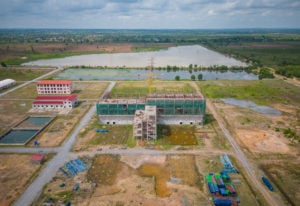
RecommendedCounting on coal: Cambodia’s fossil fuel push flounders
While Cambodia plans to expand its portfolio with large-scale solar farms, the growth of small-scale rooftop and industrial solar has been sluggish due to policy challenges. The country prohibits net metering and net billing, though recent regulatory changes aim to replace capacity charges with new tariffs in an effort to boost rooftop solar initiatives.
Despite plans to achieve carbon neutrality by 2050, Cambodia has experienced severe power shortages in recent years, affecting as many as 43% of businesses. Rooftop solar could provide a solution for industries and help transform the lives of residents across the 245 villages yet to be connected.
Chinese companies play a key role in Cambodia’s solar development. In 2018, Hengtong Optic-Electric secured the rights to build the country’s second-largest solar farm, which has a capacity of 200MW. Additionally, late last year, the China Datang Corporation announced a $600 million investment in solar and wind projects in Cambodia.
Indonesia
Solar PV has a longstanding history in Indonesia, dating back to the 1980s, when it was regarded as a regional pioneer. Although progress was initially slow, recent years have seen a resurgence.
In 2021, the Ministry of Energy and Mineral Resources (MEMR) identified a solar potential of 3294GW. The government set ambitious targets: 3.61GW of rooftop solar by 2025, 26.65GW of floating solar and a 4.68 GW large-scale solar power plant by 2030.
By December 2023, rooftop solar had reached only 140MW, well below the national target. Large-scale solar, per Global Energy Monitor, stood at 21MW, placing Indonesia eighth among 11 ASEAN countries.
Despite challenges, Indonesia inaugurated the Cirata floating solar plant in West Java in late 2023, with a capacity of 192MW. It is Southeast Asia’s largest and the world’s third-largest floating solar plant, a collaboration between Indonesia’s state-owned PLN and Abu Dhabi-based Masdar.
In January 2024, the MEMR revised regulations on solar power integration, removing capacity limits on rooftop systems, while implementing a quota system overseen by the ministry for feeding electricity into the PLN grid.
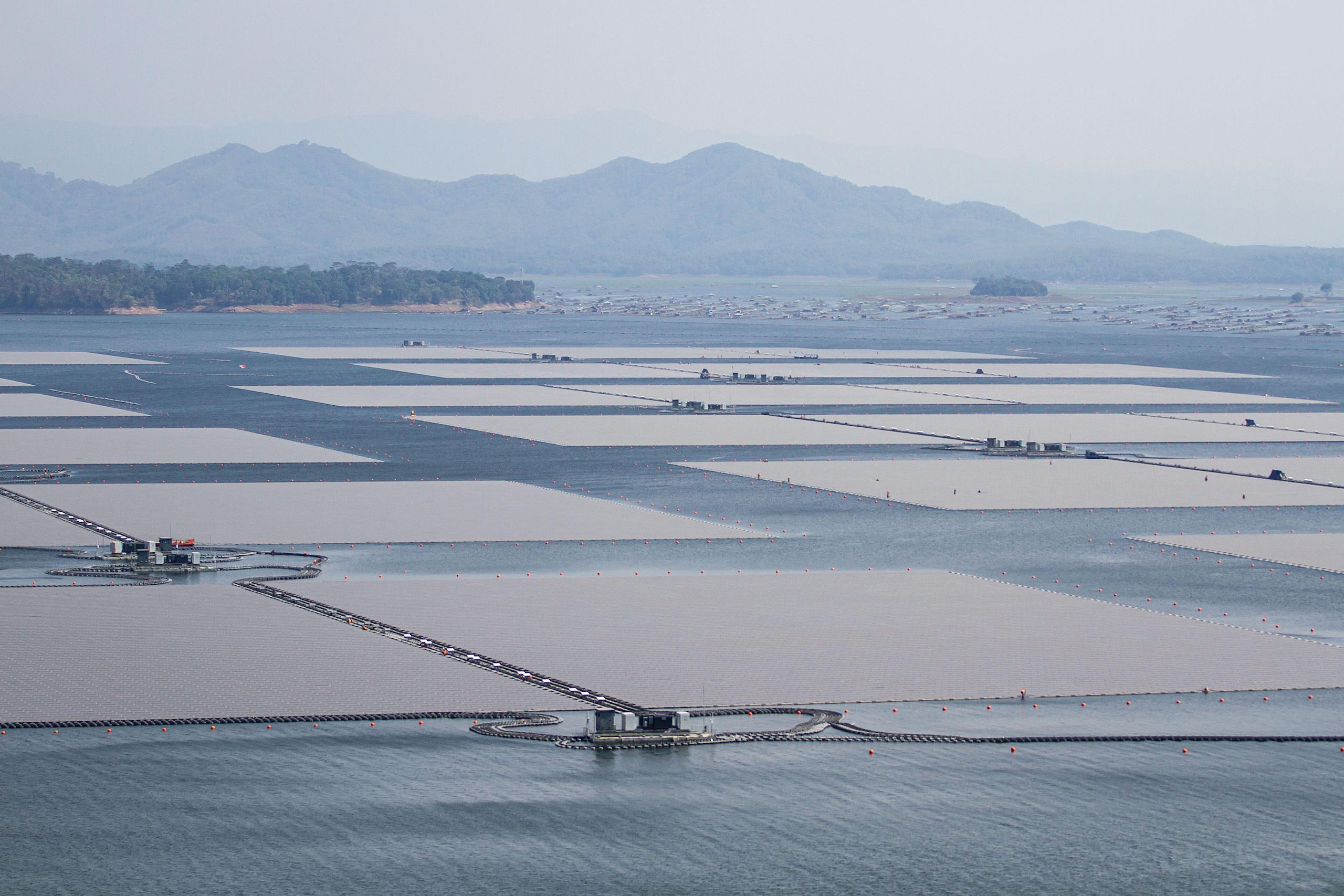
The Cirata floating solar plant in West Java, Indonesia is the third-largest in the world (Image: Zuma Press /
Alamy)
Laos
Laos, blessed with abundant sunshine, has significant solar energy potential. However, hydropower still dominates its renewable energy sector, accounting for about 73% of electricity generation. As of 2023, solar energy made up less than 1% of the energy mix.
The Laotian government has set ambitious goals to diversify its renewable energy portfolio. By 2030, Laos aims to achieve a combined solar and wind capacity of 1GW as part of a broader strategy to reduce dependence on hydropower and enhance energy security. However, current projections suggest it is expected to fall well short of this target.
In 2017, Laos marked a milestone in its renewable energy journey by opening its first solar farm in Vientiane with a capacity of 10MW. Building on this initial success, Laos embarked on its largest solar venture to date in 2022, with a 50MW solar project. Reports indicate that eight smaller plants are now operational across Laos, signalling a slow but steady expansion in solar infrastructure.
However, a report from Global Energy Monitor indicates that Laos’ total operational solar capacity may not be as substantial as these developments suggest. Nevertheless, significant projects are in the pipeline: a 64MW solar plant is currently under construction and a huge 240MW floating solar farm, by French energy giant EDF, is in the pre-construction phase.
These larger projects are crucial for significantly boosting Laos’ solar power capabilities and moving towards a sustainable energy future, although they have yet to contribute to the national grid. The contrast between operational plants and those under development underscores the evolving nature of Laos’s commitment to expanding its solar energy capacity. Challenges such as inadequate infrastructure, limited investment and regulatory hurdles act as significant barriers. To attract more investment, the government has introduced measures such as import duty exemptions on capital machinery and equipment to help make projects more financially viable. Laos needs to build on this by implementing policies that facilitate the adoption of feed-in tariffs, making solar more attractive to investors and energy producers.
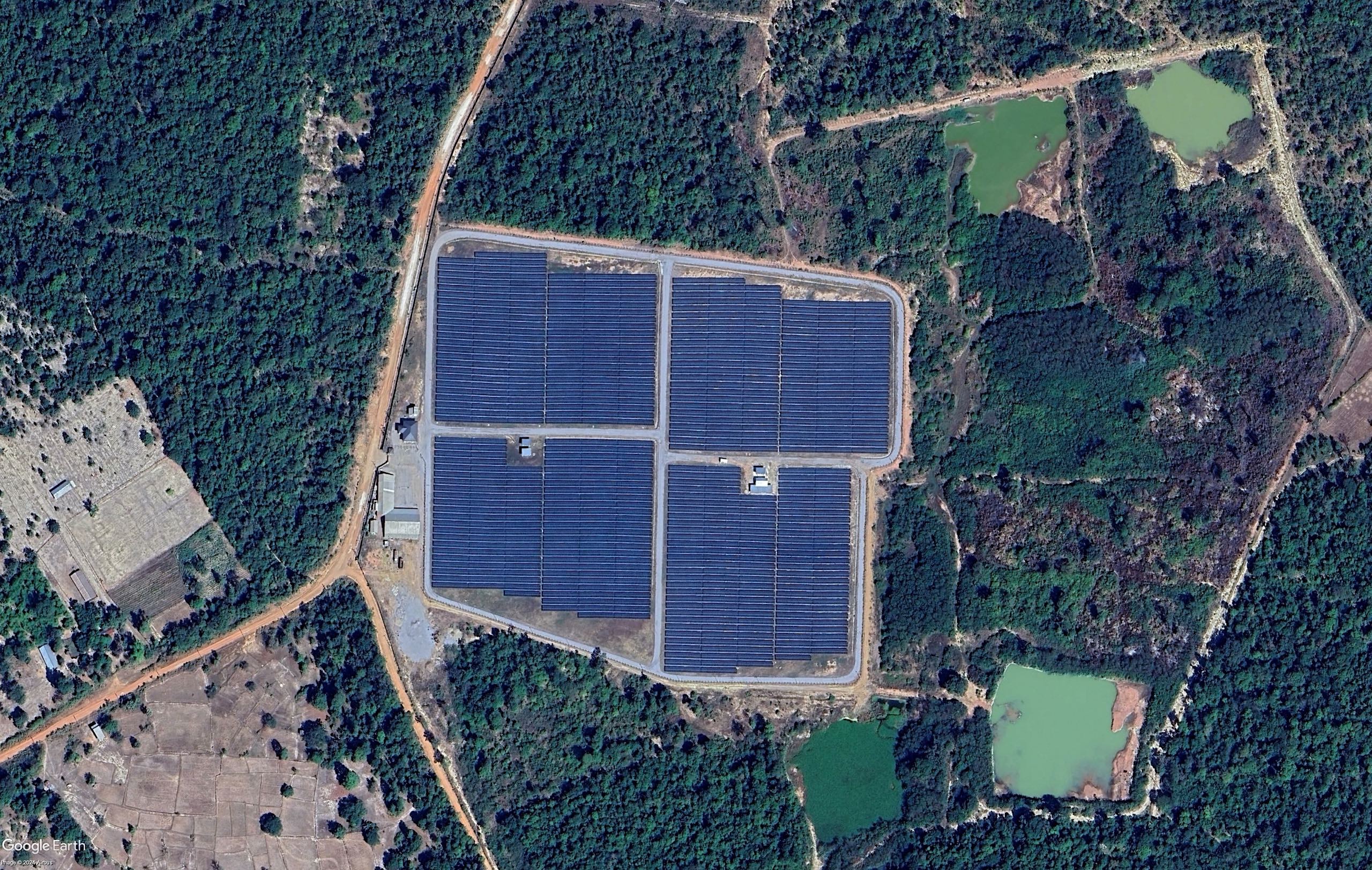
The Sharp Savannakhet solar farm in southern Laos can generate 11 megawatts of electricity in a year (Image © 2024 Airbus via Google Earth)
Myanmar
In 2020, Myanmar set up a tender for 29 ground-mounted solar projects, 28 of which were won by Chinese companies totalling 1.06GW of solar power. However, following a military takeover in February 2021, all tenders in the war-torn country were cancelled by 2022, with only three projects in any phase of development.
Solar and wind contribute just 1% of domestic energy production, with ground-mounted solar accounting for 192MW, according to a 2023 World Bank Report. With the lowest electrification rate in Southeast Asia, less than half of Myanmar’s population has access to the public grid and regular power outages plague most factories. As of December 2022, 22% of Myanmar businesses had invested in off-grid power systems like solar, the World Bank’s Myanmar business survey found.
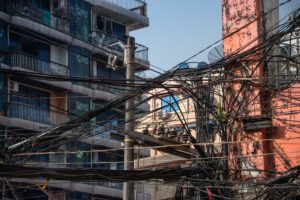
RecommendedMyanmar rulers threaten environmental progress
As the junta struggles with constant power shortages and increasing gas costs, local companies have turned to solar to fill the gap. Despite difficulty in importing solar power, Myanmar’s solar industry grew more than 10 times between 2022 and 2023.
Nevertheless, ground-mounted solar projects in Myanmar are still being planned. Late last year, China signed a power-purchase agreement with Myanmar’s junta for three solar projects, developed by PowerChina Resources, totalling 90MW. Under the junta, Myanmar’s energy sector remains under strict military control.
Philippines
The Philippines is recognised by Global Energy Monitor as an emerging global leader in solar and wind energy, alongside Vietnam. The country has 2.3GW of operational large-scale solar power capacity.
Aligned with its national renewable energy programme 2020-2040, the Philippines aims for 285MW of installed capacity by 2030, with interim targets of 5MW by 2025 and 2030, respectively. The government plans to bolster this effort by adding nearly 2GW of solar capacity as part of the overall 4.16GW renewable energy projects slated for 2024.
With its progressive auctions, feed-in-tariffs, net metering schemes and tax incentives, the Philippines is ranked as the fourth most attractive emerging market for renewable energy. Another advantage is that the private sector dominates the market, unlike in neighbouring countries, such as Indonesia, where state-owned entities dominate. This approach facilitates smoother development processes through diversified resource allocation.
Thailand
With both a strong domestic production centre and a commitment to reaching net-zero emissions by 2050, Thailand’s power development plan (PDP 2018-2037) aims to establish a total installed capacity of 15.6GW of solar energy by 2035. Benefitting from relaxed domestic policies, Thailand has witnessed a yearly compound growth rate exceeding 20% in photovoltaic installations since 2012, resulting in approximately 4.96GW of installed capacity as of late 2023.
By the 2036 target, solar energy will account for around half of the 29.4GW allocated to renewables in Thailand’s PDP. Thailand ranks among Southeast Asia’s solar capacity leaders, second only to Vietnam.
Following US anti-dumping tariffs on Chinese solar panels, Thailand emerged as a manufacturing hub, particularly in the Eastern Economic Corridor, although most production is exported. Recent tariff adjustments have prompted some manufacturers in Thailand and Vietnam to announce temporary production shutdowns.
Innovative projects like the world’s largest hydro-floating solar project at Sirindhorn Dam, operational since 2022 in Ubon Ratchathani Province, demonstrate Thailand’s reliance on solar energy. The Sirindhorn Dam project from the Electric Generating Authority of Thailand (Egat) only generates 45MW, but Egat has plans for a further 15 floating solar farms across Thailand with a combined capacity of 2,750MW.
Efforts to expand rooftop solar have been stymied in recent years by a sluggish net metering system, where solar-generated electricity goes to the grid transmission line for sale. As of last year, plans for a new net metering scheme were put on hold following legal and technical problems identified by the energy ministry.
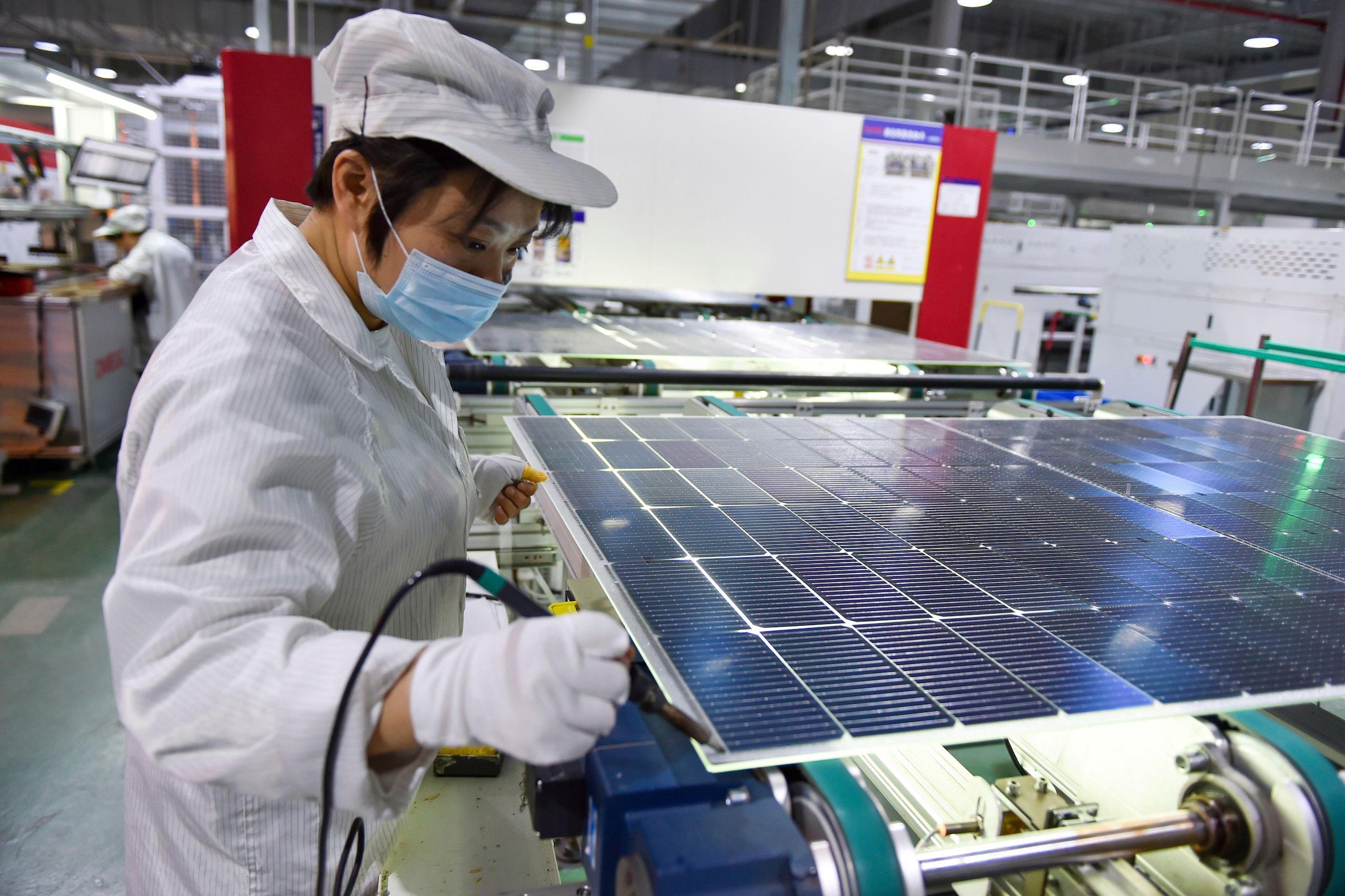
Inside a solar cell factory in east China’s Jiangsu province. Chinese companies make most of the solar panels used in Southeast Asia, though Thailand has emerged as a manufacturing hub in recent years (Image: Fang Dongxu / AP / Alamy)
Vietnam
Vietnam has emerged as a leader in solar energy within Southeast Asia, driven by favourable government policies and substantial private sector investment. With an installed solar capacity exceeding 18.4GW as of 2023, Vietnam is the largest solar market in the region, outstripping the combined capacities of all other ASEAN countries combined by a ratio of two to one.
The country’s solar expansion owes much to effective government measures such as attractive feed-in tariffs and robust net metering systems. Despite the expiration of a previous auction scheme, Vietnam has initiated pilot programmes to foster bilateral power purchase agreements (PPAs), aiming to enhance market competition and sustain growth in the solar sector.
Under Vietnam’s eighth national power development plan (PDP VIII), the country aims to add 2.6GW of rooftop solar capacity by 2030, as part of its commitment to reduce greenhouse gas emissions and bolster energy security. Looking ahead to 2050, Vietnam has set itself a total installed solar capacity of 170GW, representing 33% of total power generated. Projects like the 450MW Trung Nam Thuan Nam solar power plant and the 600MW Dau Tieng solar complex are pivotal in achieving this goal.
Despite its successes, an outdated and inadequate grid infrastructure have caused transmission and distribution challenges, leading to grid congestion and curtailment issues, requiring ongoing investments. The government’s proactive measures include expanding the grid and optimising regulations to ensure efficient renewable energy integration.
Vietnam’s solar energy development has attracted international attention and substantial investments from global development agencies like the Asian Development Bank. These investments are crucial to sustaining momentum and meeting the country’s renewable energy targets.
Fidelis Eka Satriastanti is Southeast Asia editor, focusing on Indonesia, Malaysia and the Philippines. She joined the organisation in 2022 and is based in Jakarta. Prior to that, she was a freelancer writing environment-related articles for international media outlets, such as Jakarta Globe, Mongabay, Thomson Reuters Foundation, SciDev, and the Ken. She graduated from Faculty of Humanities, University of Indonesia, majoring in philosophy. Her interests include climate change, energy transition, Indigenous peoples, and biodiversity.
Tyler Roney has been Dialogue Earth’s editor for mainland Southeast Asia since 2020 and is based in Bangkok. He has worked in China and mainland Southeast Asia for newspapers, magazines, online publications, radio, and television, including reporting with Foreign Policy, The Diplomat, AP, Coconuts Media, and Nikkei Asian Review. With an interest in wildlife photography and conservation, Tyler focuses on the effects of hydropower and development in the Lower Mekong basin.
Soraya Kishtwari joined Dialogue Earth as Asia Pacific editor in 2024 and is based in London. She has lived and worked in Africa, Asia, Latin America and Europe. Soraya has an MA in newspaper journalism from City University, London and previously reported on UK politics for the Times and the British newswire, PA Media. With over 15 years of reporting experience, her work spans subjects including the environment, geopolitics and human rights. Her multimedia work and articles have appeared in prominent international media, including Time, The Guardian, Mongabay, The Diplomat and the Daily Beast. She has also collaborated with non-governmental organisations, including UN Women. Soraya is fluent in five languages.


